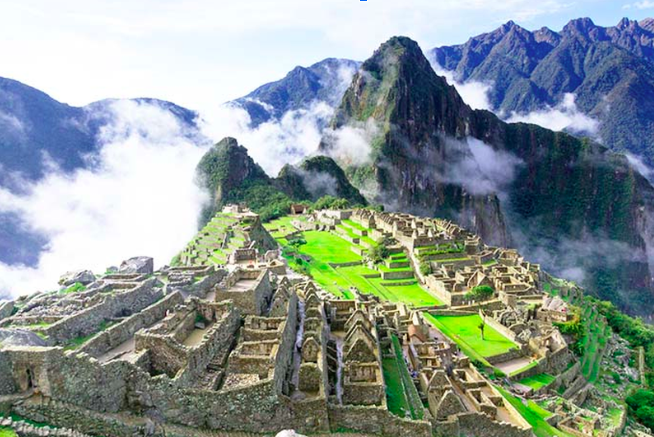Incas Built Machu Picchu at Inaccessible Location Taking Advantages of Geological Faults

Image is for representational use only.
One of the world’s architectural marvels is the Machu Picchu sanctuary, situated in Peru. Machu Picchu was a product of the Inca civilisation, which thrived in the 15th century. Located in a remote Andean setting at the top of a narrow ridge and high above a precipitous river canyon, Machu Picchu is famous for its location in a spectacular landscape. However, to reach Machu Picchu is not an easy task due to the difficult terrain that has to be travelled to get a view of it. For a very long time, archaeologists and scientists have been intrigued by one question—why did the Incans build their architectural marvel at such an inaccessible location? New archaeological findings suggest that the answer may lie at the geological faults that lie beneath the site where Machu Picchu was built.
Rualdo Menegat, a geologist at Brazil’s Federal University of Rio Grande do Sul, presented the results of his detailed analysis about the matter at Geological Society of America’s annual meeting on September 23. Menegat’s geoarchaeological analysis suggests that the Incans built Machu Picchu and some other cities as well in locations where tectonic faults meet. “Machu Pichu's location is not a coincidence. It would be impossible to build such a site in the high mountains if the substrate was not fractured," says Menegat.
Tectonic faults or geographical faults are the cracks on the Earth’s crust. These faults mark the separation of Earth’s tectonic plates. Wherever these faults are active, the tectonic plates move and also cause earthquakes.
Menegat used a combination of satellite imagery and field measurements to map a dense web of fractures and faults that were intersecting each other beneath the site of Machu Picchu. He found these fractures and faults to be of wide variety, from tiny fractures visible in stones to a major, 175 kilometre long lineament, which controls the orientation of some river valleys situated in the region.
The Andes Mountain is as old as 8 million years and was formed due to the uplifting by these fault zones and Menegat, in his analysis, found that these faults and fractures occur in several sets. These faults also have a typical orientation—some oriented in Northeast-Southwest and the others in the Northwest-Southeast direction. They collectively create the shape of an “X” where they intersect beneath Machu Picchu.
Menegat’s mapping suggests that Machu Picchu’s urban sectors and the surrounding agricultural fields along with the individual buildings and stairs, all are arranged in accordance of the orientation of the faults. "The layout clearly reflects the fracture matrix underlying the site. Other ancient Incan cities, including Ollantaytambo, Pisac, and Cusco, are also located at the intersection of faults,” he says adding, "Each is precisely the expression of the main directions of the site's geological faults."
The Incas took the advantage of these fault network. "The intense fracturing there predisposed the rocks to breaking along these same planes of weakness, which greatly reduced the energy needed to carve them,” according to Menegat’s analysis.
The Machu Picchu sanctuary gives a perfect feature of genius stonework—the stones are so perfectly fitted with one another that even a credit card cannot slip through. Incas were able to cleverly harness the advantage of the geological faults and fractures in giving the stones these shapes.
The underneath fault network also helped the Incas apart from shaping the stones. Primary among them was a ready source of water. The area’s tectonic faults helped channelise melted water and rain water straight to the site. The site of Machu Picchu in a high perch also helped in isolating from avalanches and landslides, which are too common in the area. The fracture and faults also helped the Incans in draining out the site during intense rainstorms, another common natural phenomenon in the region.
“About two-thirds of the effort to build the sanctuary involved constructing subsurface drainages. The pre-existing fractures aided this process and help account for its remarkable preservation. Machu Picchu clearly shows us that the Incan civilization was an empire of fractured rocks." – Menegat explains.
Get the latest reports & analysis with people's perspective on Protests, movements & deep analytical videos, discussions of the current affairs in your Telegram app. Subscribe to NewsClick's Telegram channel & get Real-Time updates on stories, as they get published on our website.














